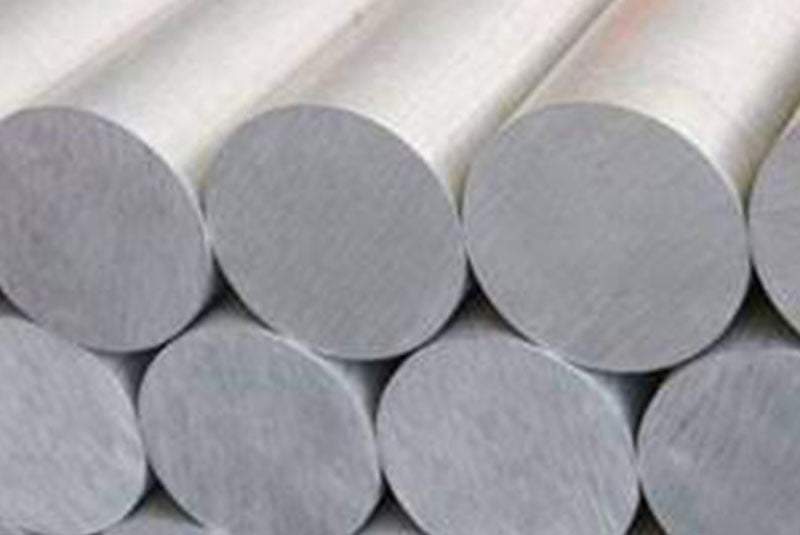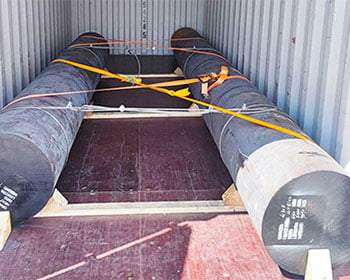Introduction
In the realm of construction and manufacturing, carbon steel round bars stand as unsung heroes, quietly shaping the world around us. These bars, composed primarily of iron with a carbon content ranging from 0.05% to 2.1%, are widely employed in a diverse array of applications, from towering skyscrapers to intricate machinery components. This comprehensive guide delves into the world of carbon steel round bars, exploring their properties, grades, manufacturing processes, and extensive applications.
Unveiling the Essence of Carbon Steel Round Bars

Carbon steel round bars are essentially cylindrical rods of iron alloyed with carbon. This seemingly simple combination transforms iron into a remarkably versatile material with enhanced properties:
- Strength: Carbon steel’s strength is directly proportional to its carbon content. Higher carbon content increases hardness and tensile strength, making it suitable for load-bearing applications.
- Ductility: Carbon steel exhibits a good balance of strength and ductility, allowing it to be shaped and formed without cracking or breaking. This property is crucial for applications requiring bending, twisting, or forging.
- Formability: Carbon steel’s formability makes it adaptable to various manufacturing processes, such as rolling, forging, and welding. This versatility allows for the creation of complex shapes and intricate components.
Grades of Carbon Steel Round Bars: Navigating the Spectrum
The Society of Automotive Engineers (SAE) and American Iron and Steel Institute (AISI) have established a standardized system for classifying carbon steel grades. These grades are designated by a four-digit number, where the first two digits represent the steel type and the last two digits indicate the carbon content:
| SAE/AISI Grade | Carbon Content (%) | Characteristics |
|---|---|---|
| 10xx | 0.05-0.13 | Very low carbon, excellent ductility and formability |
| 11xx | 0.13-0.30 | Low carbon, good ductility and formability |
| 12xx | 0.30-0.50 | Medium carbon, increased strength and hardness |
| 13xx | 0.50-0.80 | Medium-high carbon, higher strength and hardness |
| 15xx | 0.80-1.15 | High carbon, high strength and hardness |
The choice of carbon steel grade depends on the specific application and required properties. For instance, low-carbon grades are suitable for applications requiring excellent formability, while high-carbon grades are tercih edilir for load-bearing applications where strength is paramount.
Manufacturing Processes of Carbon Steel Round Bars
The production of carbon steel round bars involves a series of transformative processes:
Iron Ore Extraction: Iron ore, the primary source of iron, is extracted from mines through various methods, such as open-pit or underground mining.
Iron Ore Processing: The extracted iron ore is crushed, purified, and converted into iron sinter or pellets, which are feedstocks for the next stage.
Blast Furnace Operation: In a blast furnace, iron ore, coke (a fuel derived from coal), and limestone are fed into the top, while preheated air is injected from the bottom. The intense heat and chemical reactions cause the iron ore to melt, forming molten iron.
Steelmaking: Molten iron is transferred to a steelmaking vessel, where controlled amounts of carbon and other alloying elements are added to achieve the desired steel grade. This process involves techniques like oxygen refining and electric arc furnace (EAF) steelmaking.
Casting and Rolling: The molten steel is poured into molds or onto slabs, where it solidifies and cools. Slabs are then passed through rolling mills to reduce their thickness and shape them into desired forms, such as plates, sheets, or bars. Hot rolling and cold rolling are the two main rolling processes employed.
Applications of Carbon Steel Round Bars: A Realm of Versatility

Carbon steel round bars find applications in a vast array of industries and sectors:
Construction:
- Structural beams: Carbon steel round bars form the backbone of modern construction, providing structural support for buildings, bridges, and other infrastructure projects. Their strength and durability make them ideal for load-bearing applications.
- Rebar: Reinforcing steel bars, or rebar, are embedded in concrete to enhance its tensile strength and prevent cracking. Carbon steel round bars are the most common type of rebar, due to their affordability and ease of use.
- Pipes and tubing: Carbon steel pipes and tubes are used for plumbing, HVAC systems, and industrial applications. Their versatility and resistance to corrosion make them suitable for transporting fluids and gases.
- Machinery components: Carbon steel round bars are used to manufacture a wide range of machinery components, such as gears, shafts, axles, and bearings. Their strength and machinability make them ideal for these critical parts.
- Automotive parts: Carbon steel round bars are employed in various automotive components, including suspension systems, steering linkages, and drive shafts. Their durability and resistance to fatigue make them suitable for the demanding environment of automobiles.
- Agricultural implements: Carbon steel round bars are used to fabricate agricultural implements, such as plows, harrows, and toolbars. Their strength and resistance to wear make them ideal for these rugged applications.
Consumer Goods:
- Fencing and railings: Carbon steel round bars are used to create fencing and railings for homes, businesses, and industrial facilities. Their strength and durability provide security and protection.
- Furniture frames: Carbon steel round bars form the frames of various furniture pieces, such as chairs, tables, and beds. Their strength and flexibility allow for diverse designs.
- Sports equipment: Carbon steel round bars are used in various sports equipment, such as baseball bats, hockey sticks, and golf shafts. Their strength and resilience make them suitable for the demands of sports.
Conclusion
Carbon steel round bars, with their remarkable combination of strength, ductility, and formability, have become indispensable materials in construction, manufacturing, and various other industries. Their versatility allows them to be shaped into countless forms and components, contributing to the infrastructure and products that shape our world. As technology advances and demands evolve, carbon steel round bars are likely to remain a cornerstone of modern materials, continuing to support and enhance our built environment.
FAQ
Q: What are the advantages of using carbon steel round bars?
A: Carbon steel round bars offer several advantages, including:
- Strength and durability: They can withstand significant loads and harsh environments.
- Ductility and formability: They can be easily shaped and bent into various forms.
- Versatility: They can be used in a wide range of applications.
- Affordability: They are relatively inexpensive compared to other metals with similar properties.
Q: What are the different types of surface treatments for carbon steel round bars?
A: Carbon steel round bars can be treated with various surface treatments to enhance their corrosion resistance, appearance, and other properties. Common treatments include:
- Galvanizing: Coating with zinc provides protection against rust and corrosion.
- Painting: Applying paint or primer enhances aesthetics and further protects against corrosion.
- Phosphatizing: Creating a phosphate layer improves paint adhesion and corrosion resistance.
Q: How do I choose the right carbon steel round bar grade for my application?
A: The choice of carbon steel grade depends on the specific application and required properties. Consider factors such as strength, ductility, formability, and corrosion resistance. Consult with a materials engineer or supplier for guidance.
Q: What safety precautions should I take when working with carbon steel round bars?
A: Always follow safety guidelines when handling carbon steel round bars. Wear appropriate personal protective equipment (PPE), including gloves, safety glasses, and hearing protection. Use proper lifting techniques and avoid sharp edges. Ensure proper storage and handling to prevent accidents.
